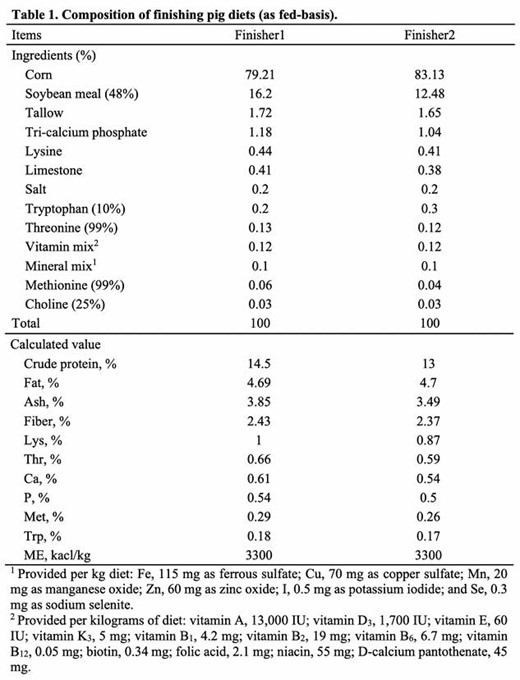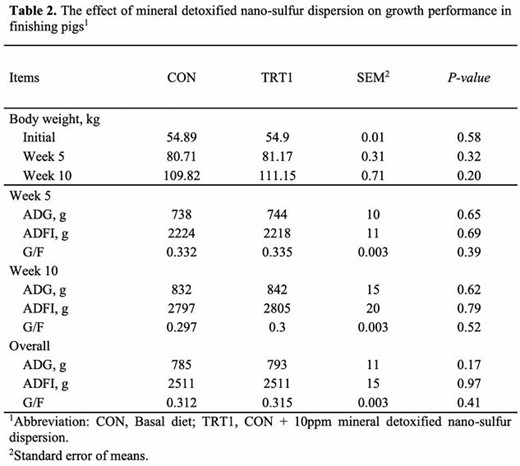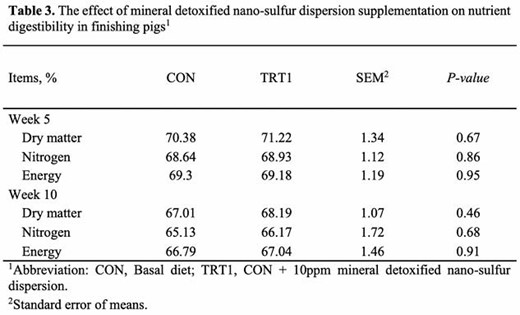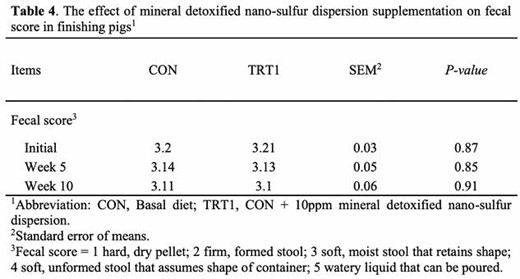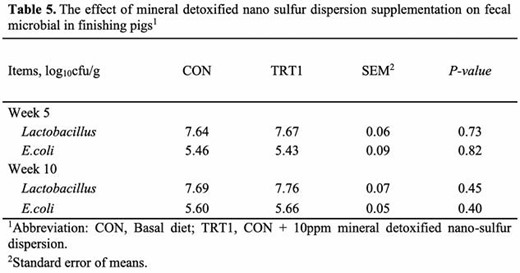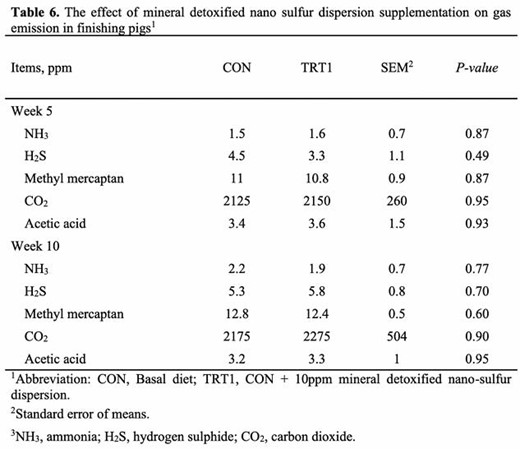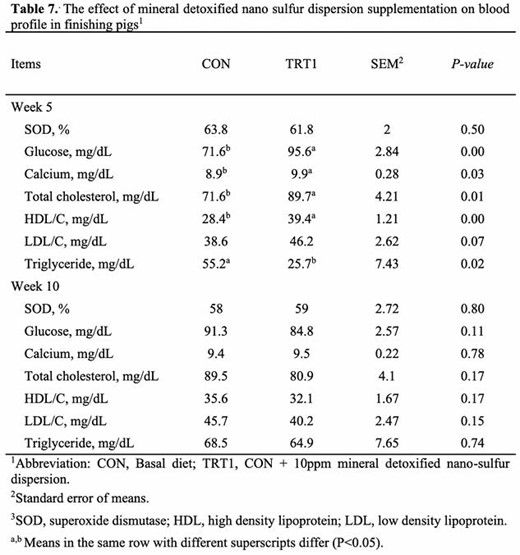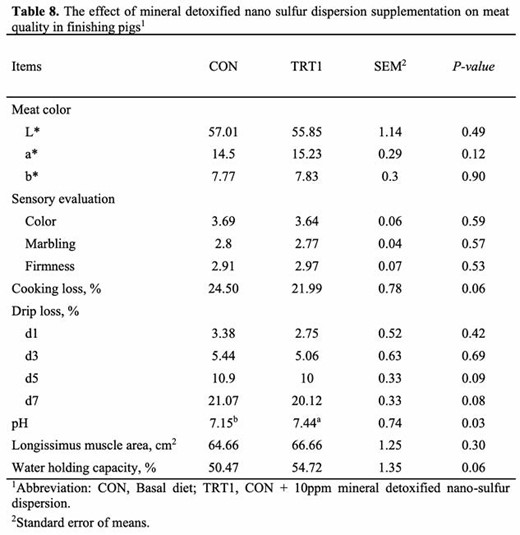-
Views
-
Cite
Cite
Koo Deokho, Mohankumar Thamaraikannan, Madesh Muniyappan, Song Junho, Ahn Je Min, Kim Inho, PSVII-1 Dietary inclusion of mineral detoxified nano-sulfur dispersion on growth performance, fecal score, fecal microbial, gas emission, blood profile, digestibility and meat quality in finishing pigs, Journal of Animal Science, Volume 99, Issue Supplement_3, November 2021, Pages 405–407, https://doi.org/10.1093/jas/skab235.731
Close - Share Icon Share
Abstract
Minerals enhance the digestive and bio-synthesis process and growth of animals. Nano-minerals are considered to be more efficient in growth, immunomodulation, bactericidal effects than regular products. Also, they are needed in a lower dose. Sulfur is an essential part of many enzymes and antioxidant molecules like glutathione and thioredoxin. Some sulfur containing compounds can efficiently form a line of defense against reactive oxygen and nitrogen species. This study aimed to evaluate the effects of Detoxified nano-Sulfur Dispersion (DSD) on growth performance, fecal score, fecal microbial, gas emissions, blood profile, nutrient digestibility and meat quality in finishing pigs. A total of 160 pigs with an initial body weight of 54.90 ± 5.10 kg were randomly assigned to 2 treatments comprising of basal diet and basal diet with 10ppm DSD. All data were statically analyzed by T-test using the SAS program as a randomized complete block design, with the pen serving as an experimental unit. During the 10-week trial, there were no differences (P > 0.05) in body weight (BW), average daily gain (ADG), average daily feed intake (ADFI) and gain to feed ratio (G:F) between the control and DSD groups. Also, the fecal score, fecal microbiota, gas emission were not affected (P > 0.05) by DSD diet. Dietary inclusion of DSD tended (P < 0.10) to increase water holding capacity and decrease cooking loss and drip loss. At week 5, serum concentrations of glucose, calcium, total cholesterol, high-density level were increased, and triglyceride concentration was significantly (P < 0.05) reduced in pigs fed with DSD than control diets. In summary, the inclusion of dietary DSD in the finishing pig diet improved serum Ca, glucose concentrations and lipid profiles. It also improved some meat quality traits, indicating its importance in improving the health status of animals.
